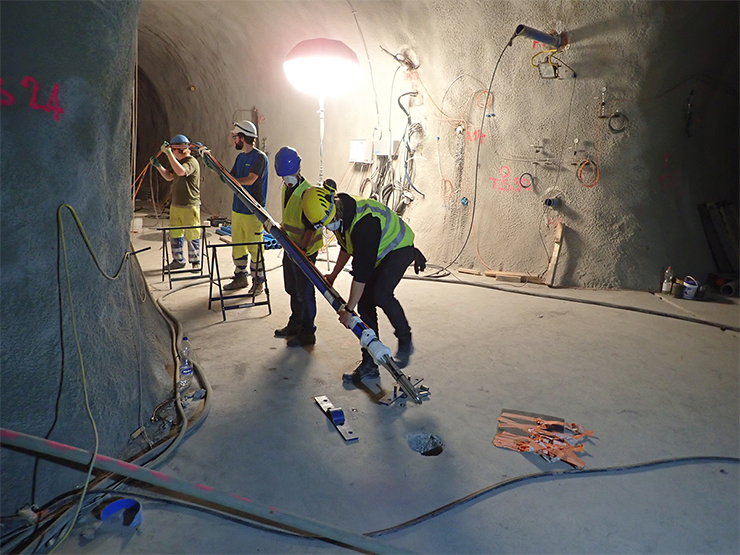2019-01-17
Experiment investigates how faulted rock retains CO2
In order to achieve the ambitious UN climate targets, it is not enough to reduce greenhouse gas emissions. As a complementary option, one can capture CO2 directly from industrial production or from the atmosphere and store it permanently in the deep underground. For enabling so-called negative emissions, sequestrated CO2 needs to be safely retained for centuries. Once injected into a reservoir, CO2 may escape again in two ways: through existing boreholes or through existing faults in the rock above the reservoir meant to seal it. Faults in this caprock may not only influence the long-term containment of CO2. They are also the place, where earthquakes may occur.
Read more...Currently, the physical and chemical parameters governing leakage through faults, and the effects of rock deformation and chemical interactions leading to induced seismicity, are not fully understood. There is further limited knowledge on Swiss-specific conditions, making it difficult to judge to what extent underground CO2 storage could be an option in this country. This is why scientists from the Swiss Seismological Service at ETH Zurich and the SCCER-SoE are conducting an experiment, in collaboration with the Department of Mechanical and Process Engineering and the Institute of Geophysics at ETH Zurich as well as Swisstopo and EPFL. The experiment is taking place at the Mont Terri rock laboratory and part of the ELEGANCY project funded by the European Commission and the Swiss Federal Office of Energy.
Scientists will investigate how CO2 migrates withing a rock with faults, under what circumstances induced seismicity may occur, and how such a storage should be monitored best. Therefore, they will inject small amounts of CO2-enriched saltwater into a borehole that cuts through a small fault zone. To study how the fault zone reacts to the CO2 injected, they will observe the stability of the rock and analyse the coupling between fault slip, pore pressure, and fluid migration. Active and passive seismic sensors will monitor the variations of seismic velocities around the injection and register possible micro-earthquakes with magnitudes below zero.
In contrast to a full-scale CO2 storage project, this experiment only investigates the relevant processes with small amounts of CO2-enriched saltwater. Nonetheless, its findings will contribute to a better understanding of the relevant processes influencing the migration of CO2 in faults. Thereby, the experiment will also contribute to an enhanced site characterization. Worldwide, about twenty CO2 storage projects are already in operation, each sequestering up to three million tons of CO2 per year, and numerous plants are in the planning. In Switzerland, there is currently no CO2 storage project planned.
Learn more about the ELEGANCY project:
